#Los Alamos | New Mexico
Text

The site in Los Alamos, New Mexico, where Robert J. Oppenheimer and his team developed the First Atomic Device in the 1940s is now a United States National Historic Park. It includes structures like this replica of the campus’s main gate. Photograph By Brian Snyder, Reuters/Redux
Trace Oppenheimer’s Footsteps, From New Mexico To The Caribbean
The Father of the Atomic Bomb Chased History—and Then Ran From It. Here’s How to Visit Places Important to the Influential Physicist, Including a U.S. Virgin Islands Beach.
— By Bill Newcott | March 06, 2024
As Christopher Nolan’s film Oppenheimer reintroduces the “father of the atomic bomb” to audiences, there’s no better time to hit the road and retrace some of J. Robert Oppenheimer’s most momentous steps—from New Mexico, where the physicist’s dream of a nuclear weapon was realized in the Manhattan Project; to a Nevada testing ground, where his worst fears about the bomb were demonstrated; to a remote Caribbean beach where he could, at last, quiet the demons that haunted him.
Los Alamos: Birthplace of The Atomic Bomb
The Gadget, as the first atomic device was called by its creators, was born not at Trinity—the New Mexico desert site where it was detonated—but about a hundred miles north, in the sleepy mountain town of Los Alamos. It was there that Oppenheimer, who’d spent some of his teen years in New Mexico, commandeered a former boys’ school as his base of operations.
Oppenheimer’s Manhattan Project campus, now a national historic park, is virtually unchanged from his time.
Strolling along the tree-shaded “Bathtub Row”—so named because these were the few houses on campus equipped with full baths—I walk past the squat bungalow Oppenheimer shared with his wife, Kitty, and their two children. At one end of the street, I nearly brush shoulders with a pair of life-size bronze statues: Oppenheimer—resplendent in his famous wide-brimmed hat—consulting with the project’s military head, General Leslie Groves.
Beyond them I push open the door to Fuller Lodge—the former school assembly hall, now an art gallery and community center—and I am transported into the most riveting moment from the film Oppenheimer.
You remember it: Following the bombing of Hiroshima, the scientist stands before a stone fireplace in this room and gives a victory speech to the Los Alamos staff. But even as he mouths words of triumph, Oppenheimer privately suffers searing visions of the devastation the bomb has caused.
And now, here I am, standing before that same fireplace, facing the long expanse of the room’s ponderosa pine walls and timbered ceiling. It is not hard to imagine Oppenheimer at this spot, in awe of what his team had accomplished in three short years; horrified by its implications for the rest of human history.
Trinity: Site of The First Atomic Blast
Most of the year, Trinity, the site of the first atomic blast, is still an active tract of the White Sands Missile Range, in New Mexico. On two special days, however—usually the first Saturday in April and the third Saturday in October—the U.S. Army hosts a Trinity Open House. (Due to what the U.S. Army called “unforeseen circumstances,” the 2024 April Open House has been canceled).
On those days, vehicles with plates from Alaska to Florida line up at the White Sands Stallion Gate, then bounce the 17 miles south to the circular chain link fence that encloses the spot where Oppenheimer’s Gadget ushered in the atomic age. They park in a seldom used lot and enter through a narrow gate, approaching the stark, black monument at the circle’s center with almost visceral solemnity.
Even in spring, it’s kind of hot here in the treeless, open-air oven the Spanish conquistadors called Jornada del Muerto (Journey of the Dead Man)—but not as hot as it got at precisely 5:30 a.m. on July 16, 1945, when a fireball half as hot as the surface of the sun scorched the earth of this basin.

Tourists at the White Sands Missile Range, in New Mexico, check out an example of the “Fat Man” bomb casing, built to contain a nuclear device. Here at the remote Trinity site on July 16, 1945, the Manhattan Project successfully detonated the first atomic bomb. Photograph By Martin Specht, Agentur Focus/Redux
The 100-foot tower on which the Gadget was mounted is gone, but the Trinity crater remains: a broad, surprisingly shallow, plate-like depression. At its greatest depth the hole that Trinity punched into the desert floor measures only about 10 feet. The 100-foot cushion of air under the tower prevented deeper excavation.
“As a reminder,” a guide tells a clutch of tourists, “you are not permitted to remove anything from the ground.”
“Anything” would be samples of trinitite, the glass-like element that was created in the bomb’s searing blast.
Trinity is the main attraction on visitor days, but the curious can hop a bus to a small cabin, the old Schmidt Homestead, about two miles from Ground Zero. It was here, in the former dining room, where Oppenheimer supervised the final assembly of the Gadget.
With its bare walls and polished floors, the empty house looks as benign as a fixer-upper awaiting a redo by a resourceful real estate agent. But it’s not hard to imagine the team of scientists, just days before the blast, gingerly piecing together the Gadget: A sphere of 32 little bombs surrounding a softball-sized ball of plutonium.
All 32 bombs would be ignited simultaneously. And then, literally, all hell would break loose.
Nevada Test Site
After the war, the U.S. government continued to test nuclear devices of ever more harrowing capability—first in the Pacific, and then at the Nevada Test Site, about a hundred miles north of the then backwater gambling town of Las Vegas. (On the 26th floor of Binion’s Gambling Hall in downtown Vegas, you can still dine in the restaurant where tourists once watched their “Atomic Cocktails” slosh back and forth as nuclear tests made the building sway.)
There is no indication that Oppenheimer ever set foot on the Nevada test site, where more than a thousand descendants of the Gadget were detonated over a span of three decades. Still, the site is essential to Oppenheimer’s story in that it represents his worst nuclear nightmares.
“If atomic bombs are to be added as new weapons to the arsenals of a warring world…then the time will come when mankind will curse the names of Los Alamos and Hiroshima,” he declared in 1945.
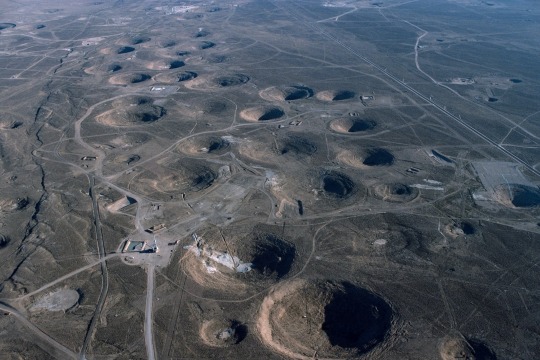
A hundred miles North of Las Vegas, the Nevada Test Site is where the U.S. and Britain continued to test Nuclear Devices after World War II. The site is open once a month for a free tour. Photograph By Karen Kasmauski, National Geographic Image Collection
“Basically, Oppenheimer was against nuclear testing post-Manhattan Project,” says Joseph Kent, deputy director and curator of the Atomic Museum in Las Vegas. “He felt the Manhattan Project was necessary, but when they started working on the hydrogen bomb, which was much more destructive, he wasn’t comfortable with that.”
We’re standing in the lobby of the museum, now in its 25th year, just a few blocks from the excess of the Las Vegas Strip. Near the door rests an enormous, bulbous “Fat Man” bomb casing, built in 1945 to contain a nuclear device like the Gadget I saw in New Mexico.
Primarily, the Smithsonian-affiliated Atomic Museum serves as a visitors center for the Nevada Test Site, officially known as Nevada National Security Sites (NNSS). Thanks to the museum’s continuing relationship with NNSS, once a month a busload of 50 or so history buffs leave from the museum’s parking lot to begin a free eight-hour tour of the site.
It begins with an hour drive up US 95, a trip that vividly explains why the site is here: The landscape is a mix of wide, flat valleys, perfect for bomb blasts, interrupted by occasional mountain ranges that would discourage unauthorized watchful eyes.
The highlight is a visit to Sedan Crater: a 300-foot-deep, 1,200-foot-wide crater blasted out by a 104-kiloton bomb to see if nuclear devices could be safely used to dig canals and sea ports. The answer, apparently, was “no, they can’t.”
Your guide will take a group picture at Sedan and send it to you later, but that is the one and only souvenir you’ll get: On the Nevada Test Site tour, you can’t take home rock samples and you can’t bring your camera along.
“Oppenheimer Beach,” St. John, USVI
On the eastern shore of Hawksnest Bay in St. John, U.S. Virgin Islands, a low-slung white structure sits on the broad, sugary sand. The building is a community center, but until just a few years ago, before a hurricane swept it away, a tidy wood cottage crouched there. It had been built in the 1950s by a quiet man who periodically arrived with his wife and family, keeping mostly to himself. In his later years, this is where Oppenheimer escaped the stresses of a world he’d helped create. And Hawksnest Bay is where he and his wife had their ashes spread out.

The sun sets over St. John, in the U.S. Virgin Islands. Oppenheimer and his wife and family spent time at a cottage here on Hawksnest Bay in the 1950s. Photograph By Michael Melford, National Geographic Image Collection
Today, locals call the spot Oppenheimer Beach.
Walking this beach, Oppenheimer could wish away the daily reminders of a nuclear arms race, far from the politicians who had exploited his genius to build the bomb and then, as the Nolan film portrays, turned on him when he expressed regret over his accomplishment.
On St. John, “no one was going to harass him,” local historian David Knight, whose parents house-sat for Oppenheimer during his absences, told the BBC. “No one knew who he was or cared.”
#Los Alamos | New Mexico#First Nuclear ☢️ Bomb 💣#Robert J. Oppenheimer#Los Alamos | Birthplace | Atomic Bomb#Christopher Nolan#United States 🇺🇸 National Historic Park#Atomic Blast 💥#Nevada | US 🇺🇸 States#Oppenheimer Beach | St. John | US Virgin Island
1 note
·
View note
Text
So with Oppenheimer coming out tomorrow, I feel a certain level of responsibility to share some important resources for people to understand more about the context of the Manhattan Project. Because for my family, it’s not just a piece of history but an ongoing struggle that’s colonized and irradiated generations of New Mexicans’ lives and altered our identity forever. Not only has the legacy of the Manhattan Project continued to harm and displace Indigenous and Hispanic people but it’s only getting bigger: Biden recently tasked the Los Alamos National Lab facility to create 30 more plutonium pits (the core of a nuclear warhead) by 2026. So this is a list of articles, podcasts and books to check out to hear the real stories of the local people living with this unique legacy that’s often overlooked.
This is simply the latest mainstream interest in the Oppenheimer story and it always ALWAYS silences the trauma of the brown people the US government took advantage of to make their death star. I might see the movie, I honestly might not. I’m not trying to judge anyone for seeing what I’m sure will be an entertaining piece of art. I just want y’all to leave the theater knowing that this story goes beyond what’s on the screen and touches real people’s lives: people whose whole families died of multiple cancers from radiation from the Trinity test, people who’s ancestral lands were poisoned, people who never came back from their job because of deadly work conditions. This is our story too.
The first and best place to learn more about this history and how to support those still resisting is to follow Tewa Women United. They’ve assembled an incredible list of resources from the people who’ve been fighting this fight the longest.
https://tewawomenunited.org/2023/07/oppenheimer-and-the-other-side-of-the-story
The writer Alicia Inez Guzman is currently writing a series about the nuclear industrial complex in New Mexico, its history and cultural impacts being felt today.
https://searchlightnm.org/my-nuclear-family/
https://searchlightnm.org/the-abcs-of-a-nuclear-education/
https://searchlightnm.org/plutonium-by-degrees/
Danielle Prokop at Source NM is an excellent reporter (and friend) who has been covering activists fighting for Downwinder status from the federal government. They’re hoping that the success of Oppenheimer will bring new attention to their cause.
https://sourcenm.com/2023/07/19/anger-hope-for-nm-downwinders/
https://sourcenm.com/2022/01/27/new-mexico-downwinders-demand-recognition-justice/
One often ignored side of the Manhattan Project story that’s personal for me is that the government illegally seized the land that the lab facilities eventually were built on. Before 1942, it was homesteading land for ranchers for more than 30 families (my grandpa’s side of the family was one). But when the location was decided, the government evicted the residents, bought their land for peanuts and used their cattle for target practice. Descendants of the homesteaders later sued and eventually did get compensated for their treatment (though many say it was far below what they were owed)
https://www.hcn.org/issues/175/5654
Myrriah Gomez is an incredible scholar in this field, working as a historian, cultural anthropologist and activist using a framework of “nuclear colonialism” to foreground the Manhattan Project. Her book Nuclear Nuevo Mexico is an amazing collection of oral stories and archival record that positions New Mexico’s era of nuclear colonialism in the context of its Spanish and American eras of colonialism. A must read for anyone who’s made it this far.
https://uapress.arizona.edu/book/nuclear-nuevo-mexico
There isn’t a ton of podcasts about this (yet 👀) but recently the Washington Post’s podcast Field Trip did an episode about White Sands National Monument. The story is a beautifully written and sound designed piece that spotlights the Downwinder activists and also a discovery of Indigenous living in the Trinity test area going back thousands of years. I was blown away by it.
https://www.washingtonpost.com/podcasts/field-trip/white-sands-national-park/
#oppenheimer#oppenheimer movie#barbenheimer#manhattan project#new mexico#los alamos#I never do posts like this#but I felt compelled#theres just so much like nuclear worship going on right now
759 notes
·
View notes
Text

Mountain lion kitten attacking mom, Bandelier National Monument, New Mexico. NPS photo.
166 notes
·
View notes
Text
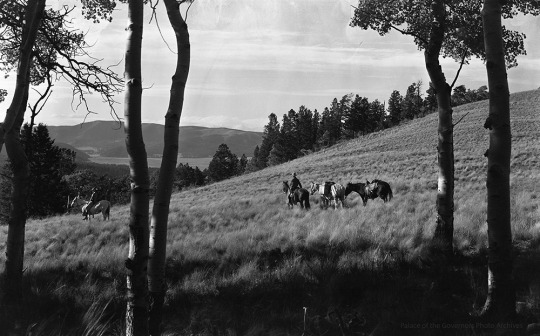
"In the Valle", Los Alamos Ranch School, Los Alamos, New Mexico
Photographer: T. Harmon Parkhurst
Date: 1925 - 1942?
Negative Number: 001135
177 notes
·
View notes
Text



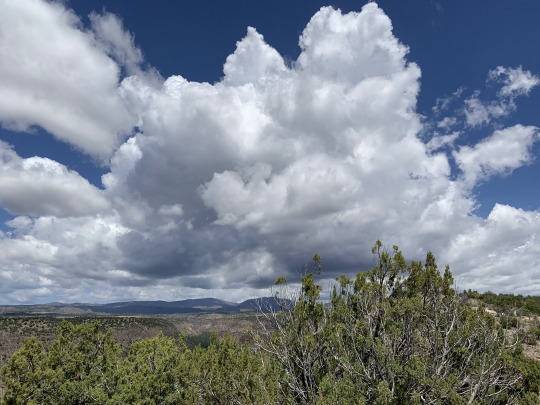

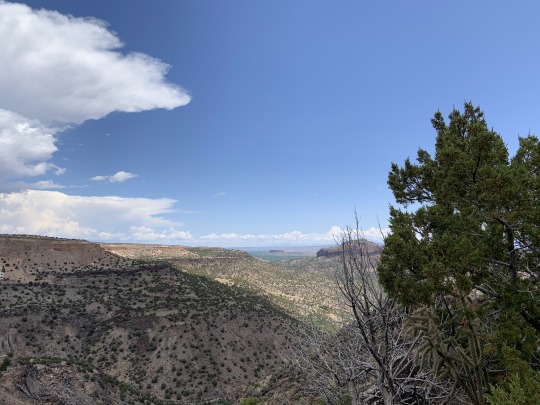
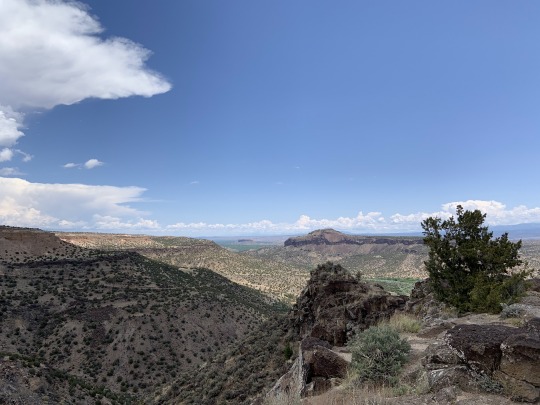
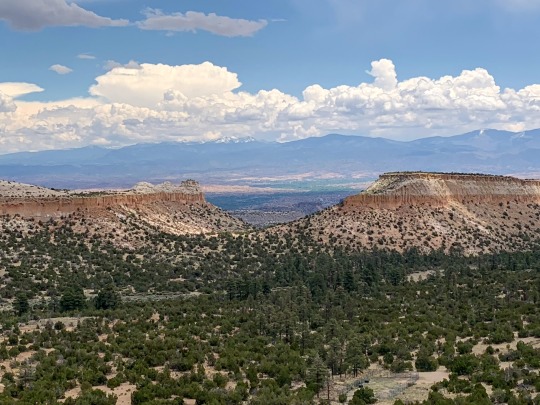

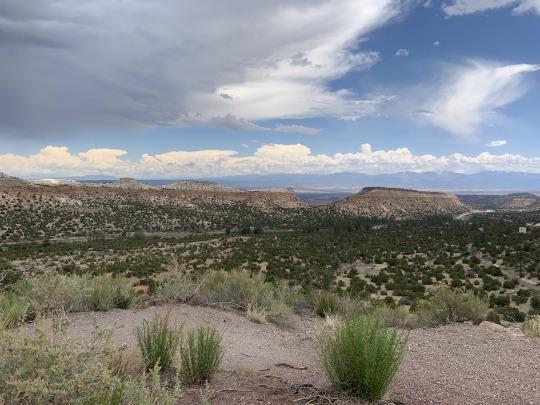
White Rock / Los Alamos, New Mexico
White Rock Overlook and surrounding area
#Rio Grande#Los Alamos#New Mexico#original photography#photographers on tumblr#landscape photography#road trip#roadtrip#vacation#vacation 2023#nature#geology#mine#white rock overlook#White Rock#American Southwest
113 notes
·
View notes
Text
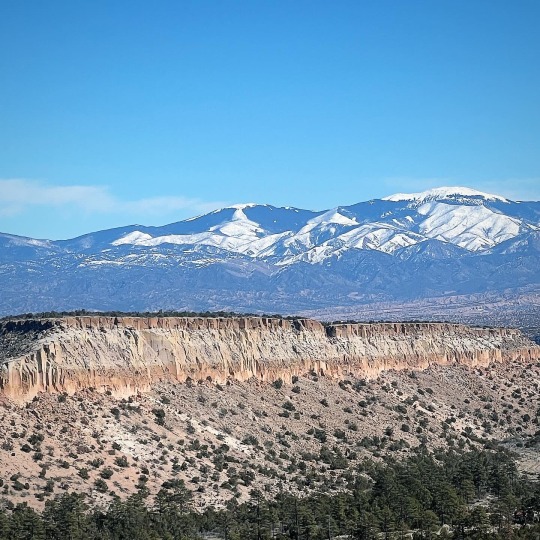


Los Alamos, New Mexico
February 2024
Alysa DeMella
#photo#landscape#winter#mountains#sangre de cristo#Santa Fe baldy#New Mexico#desert#southwest#Los Alamos#photography
29 notes
·
View notes
Text
Population: 13,179
12 notes
·
View notes
Text
this morning's early googling for wrapping up the corinthian/hob fic:
gulf of mexico oil rigs
molotov cocktail ingredients
siphoning gas tool
nuclear lab mexico
savoy hotel bathrooms
#the sandman#hob x corinthian#hobrinthian#wips#the answers i was confirming/looking for by the way are:#yes#gasoline is fine#a hose#los alamos and it's new mexico not mexico lol#marble and boring#last night included: 'hemorrhagic shock' 'blood pudding' and 'renfield'
71 notes
·
View notes
Text

White Rock Overlook, Los Alamos Co, New Mexico. Photo: Anthony Crouch (July 21, 223) :: [Robert Scott Horton]
* * * * *
"I write about what I love. I love writing even more than what I write about. And what do I do it for? To love myself, if only for a brief while."
- Vera Pavlova
Heaven Is Not Verbose: A Notebook
translated by Steven Seymour
[whiskey river]
#Robert Scott Horton#Anthony Crouch#White Rock Overlook#New Mexico#Los Alamos Co#whiskey river#Vera Pavlova#love#quotes
10 notes
·
View notes
Text
Okay so I just saw Oppenheimer. They all did a PHENOMENAL job. For those of you that don’t know and I totally don’t mind saying this, I am actually from New Mexico where the Manhattan Project took place. It was heavily talked about during my school days and as a history buff, WW2 has always been a topic I loved to learn about the most. This film hit very close to home and I’m so glad I finally got to see it. If you’re thinking about seeing it yourself, I would highly recommend it.
9 notes
·
View notes
Text
Excuse me people....excuse me...
It isn't a mistake that atomic weapons were tested in a majority Latino state and was first used to "teach" us all a lesson by slaughtering innocent Asian communities...so nonchalantly...some of us are expendable.
Just wanted to point that out. In case you wanted to amp up the story of the ultimate use of white supremacy in action known as "progress"...
#oppenheimer#atomic bomb#war#white supremacy#science#who is expendable#racism is by design#movies#american prometheus#j robert oppenheimer#christopher nolan#radioactivity#new mexico#los alamos#killing in the name#usa#america
5 notes
·
View notes
Text
The First Light of Trinity
— By Alex Wellerstein | July 16, 2015 | Annals of Technology

Seventy years ago, the flash of a nuclear bomb illuminated the skies over Alamogordo, New Mexico. Courtesy Los Alamos National Laboratory
The light of a nuclear explosion is unlike anything else on Earth. This is because the heat of a nuclear explosion is unlike anything else on Earth. Seventy years ago today, when the first atomic weapon was tested, they called its light cosmic. Where else, except in the interiors of stars, do the temperatures reach into the tens of millions of degrees? It is that blistering radiation, released in a reaction that takes about a millionth of a second to complete, that makes the light so unearthly, that gives it the strength to burn through photographic paper and wound human eyes. The heat is such that the air around it becomes luminous and incandescent and then opaque; for a moment, the brightness hides itself. Then the air expands outward, shedding its energy at the speed of sound—the blast wave that destroys houses, hospitals, schools, cities.
The test was given the evocative code name of Trinity, although no one seems to know precisely why. One theory is that J. Robert Oppenheimer, the head of the U.S. government’s laboratory in Los Alamos, New Mexico, and the director of science for the Manhattan Project, which designed and built the bomb, chose the name as an allusion to the poetry of John Donne. Oppenheimer’s former mistress, Jean Tatlock, a student at the University of California, Berkeley, when he was a professor there, had introduced him to Donne’s work before she committed suicide, in early 1944. But Oppenheimer later claimed not to recall where the name came from.
The operation was designated as top secret, which was a problem, since the whole point was to create an explosion that could be heard for a hundred miles around and seen for two hundred. How to keep such a spectacle under wraps? Oppenheimer and his colleagues considered several sites, including a patch of desert around two hundred miles east of Los Angeles, an island eighty miles southwest of Santa Monica, and a series of sand bars ten miles off the Texas coast. Eventually, they chose a place much closer to home, near Alamogordo, New Mexico, on an Army Air Forces bombing range in a valley called the Jornada del Muerto (“Journey of the Dead Man,” an indication of its unforgiving landscape). Freshwater had to be driven in, seven hundred gallons at a time, from a town forty miles away. To wire the site for a telephone connection required laying four miles of cable. The most expensive single line item in the budget was for the construction of bomb-proof shelters, which would protect some of the more than two hundred and fifty observers of the test.
The area immediately around the bombing range was sparsely populated but not by any means barren. It was within two hundred miles of Albuquerque, Santa Fe, and El Paso. The nearest town of more than fifty people was fewer than thirty miles away, and the nearest occupied ranch was only twelve miles away—long distances for a person, but not for light or a radioactive cloud. (One of Trinity’s more unusual financial appropriations, later on, was for the acquisition of several dozen head of cattle that had had their hair discolored by the explosion.) The Army made preparations to impose martial law after the test if necessary, keeping a military force of a hundred and sixty men on hand to manage any evacuations. Photographic film, sensitive to radioactivity, was stowed in nearby towns, to provide “medical legal” evidence of contamination in the future. Seismographs in Tucson, Denver, and Chihuahua, Mexico, would reveal how far away the explosion could be detected.

The Trinity test weapon. Courtesy Los Alamos National Laboratory
On July 16, 1945, the planned date of the test, the weather was poor. Thunderstorms were moving through the area, raising the twin hazards of electricity and rain. The test weapon, known euphemistically as the gadget, was mounted inside a shack atop a hundred-foot steel tower. It was a Frankenstein’s monster of wires, screws, switches, high explosives, radioactive materials, and diagnostic devices, and was crude enough that it could be tripped by a passing storm. (This had already happened once, with a model of the bomb’s electrical system.) Rain, or even too many clouds, could cause other problems—a spontaneous radioactive thunderstorm after detonation, unpredictable magnifications of the blast wave off a layer of warm air. It was later calculated that, even without the possibility of mechanical or electrical failure, there was still more than a one-in-ten chance of the gadget failing to perform optimally.
The scientists were prepared to cancel the test and wait for better weather when, at five in the morning, conditions began to improve. At five-ten, they announced that the test was going forward. At five-twenty-five, a rocket near the tower was shot into the sky—the five-minute warning. Another went up at five-twenty-nine. Forty-five seconds before zero hour, a switch was thrown in the control bunker, starting an automated timer. Just before five-thirty, an electrical pulse ran the five and a half miles across the desert from the bunker to the tower, up into the firing unit of the bomb. Within a hundred millionths of a second, a series of thirty-two charges went off around the device’s core, compressing the sphere of plutonium inside from about the size of an orange to that of a lime. Then the gadget exploded.
General Thomas Farrell, the deputy commander of the Manhattan Project, was in the control bunker with Oppenheimer when the blast went off. “The whole country was lighted by a searing light with the intensity many times that of the midday sun,” he wrote immediately afterward. “It was golden, purple, violet, gray, and blue. It lighted every peak, crevasse, and ridge of the nearby mountain range with a clarity and beauty that cannot be described but must be seen to be imagined. It was that beauty the great poets dream about but describe most poorly and inadequately.” Twenty-seven miles away from the tower, the Berkeley physicist and Nobel Prize winner Ernest O. Lawrence was stepping out of a car. “Just as I put my foot on the ground I was enveloped with a warm brilliant yellow white light—from darkness to brilliant sunshine in an instant,” he wrote. James Conant, the president of Harvard University, was watching from the V.I.P. viewing spot, ten miles from the tower. “The enormity of the light and its length quite stunned me,” he wrote. “The whole sky suddenly full of white light like the end of the world.”
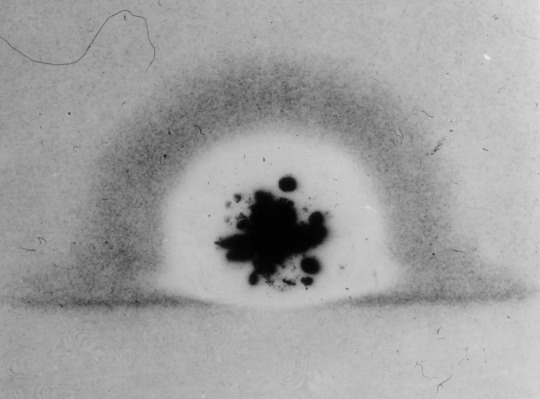
In its first milliseconds, the Trinity fireball burned through photographic film. Courtesy National Archives and Records Administration
Trinity was filmed exclusively in black and white and without audio. In the main footage of the explosion, the fireball rises out of the frame before the cameraman, dazed by the sight, pans upward to follow it. The written accounts of the test, of which there are many, grapple with how to describe an experience for which no terminology had yet been invented. Some eventually settle on what would become the standard lexicon. Luis Alvarez, a physicist and future participant in the Hiroshima bombing, viewed Trinity from the air. He likened the debris cloud, which rose to a height of some thirty thousand feet in ten minutes, to “a parachute which was being blown up by a large electric fan,” noting that it “had very much the appearance of a large mushroom.” Charles Thomas, the vice-president of Monsanto, a major Manhattan Project contractor, observed the same. “It looked like a giant mushroom; the stalk was the thousands of tons of sand being sucked up by the explosion; the top of the mushroom was a flowering ball of fire,” he wrote. “It resembled a giant brain the convolutions of which were constantly changing.”
In the months before the test, the Manhattan Project scientists had estimated that their bomb would yield the equivalent of between seven hundred and five thousand tons of TNT. As it turned out, the detonation force was equal to about twenty thousand tons of TNT—four times larger than the expected maximum. The light was visible as far away as Amarillo, Texas, more than two hundred and eighty miles to the east, on the other side of a mountain range. Windows were reported broken in Silver City, New Mexico, some hundred and eighty miles to the southwest. Here, again, the written accounts converge. Thomas: “It is safe to say that nothing as terrible has been made by man before.” Lawrence: “There was restrained applause, but more a hushed murmuring bordering on reverence.” Farrell: “The strong, sustained, awesome roar … warned of doomsday and made us feel that we puny things were blasphemous.” Nevertheless, the plainclothes military police who were stationed in nearby towns reported that those who saw the light seemed to accept the government’s explanation, which was that an ammunition dump had exploded.
Trinity was only the first nuclear detonation of the summer of 1945. Two more followed, in early August, over Hiroshima and Nagasaki, killing as many as a quarter of a million people. By October, Norris Bradbury, the new director of Los Alamos, had proposed that the United States conduct “subsequent Trinity’s.” There was more to learn about the bomb, he argued, in a memo to the new coördinating council for the lab, and without the immediate pressure of making a weapon for war, “another TR might even be FUN.” A year after the test at Alamogordo, new ones began, at Bikini Atoll, in the Marshall Islands. They were not given literary names. Able, Baker, and Charlie were slated for 1946; X-ray, Yoke, and Zebra were slated for 1948. These were letters in the military radio alphabet—a clarification of who was really the master of the bomb.
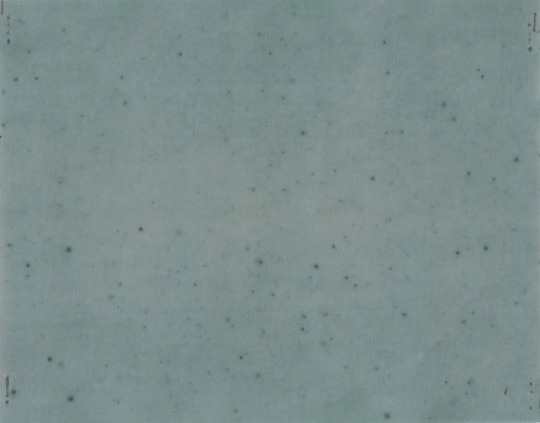
Irradiated Kodak X-ray film. Courtesy National Archives and Records Administration
By 1992, the U.S. government had conducted more than a thousand nuclear tests, and other nations—China, France, the United Kingdom, and the Soviet Union—had joined in the frenzy. The last aboveground detonation took place over Lop Nur, a dried-up salt lake in northwestern China, in 1980. We are some years away, in other words, from the day when no living person will have seen that unearthly light firsthand. But Trinity left secondhand signs behind. Because the gadget exploded so close to the ground, the fireball sucked up dirt and debris. Some of it melted and settled back down, cooling into a radioactive green glass that was dubbed Trinitite, and some of it floated away. A minute quantity of the dust ended up in a river about a thousand miles east of Alamogordo, where, in early August, 1945, it was taken up into a paper mill that manufactured strawboard for Eastman Kodak. The strawboard was used to pack some of the company’s industrial X-ray film, which, when it was developed, was mottled with dark blotches and pinpoint stars—the final exposure of the first light of the nuclear age.
#Hiroshima | Japan 🇯🇵 | John Donne | Manhattan Project | Monsanto#Nagasaki | Japan 🇯🇵 | Nuclear Weapons | Second World War | World War II#The New Yorker#Alex Wellerstein#Los Alamos National Laboratory#New Mexico#J. Robert Oppenheimer#John Donne#Jean Tatlock#University of California Berkeley#Jornada del Muerto | Journey of the Dead Man#General Thomas Farrell#Nobel Prize Winner Physicist Ernest O. Lawrence#Luis Alvarez#US 🇺🇸#China 🇨🇳#France 🇫🇷#Soviet Union (Now Russia 🇷🇺)#Alamogordo | New Mexico#Eastman Kodak#Nuclear Age
38 notes
·
View notes
Text

October 14 solar eclipse taken at Los Alamos, New Mexico, USA.
Creepy shit.
#dougie rambles#personal stuff#solar eclipse#new mexico#los alamos#embermythos#analog horror#same energy#oddly terrifying#nightmare fuel
5 notes
·
View notes
Text


371 notes
·
View notes
Text
https://www.axios.com/2023/07/20/j-r-oppenheimer-movie-new-mexico-hispanics

Henry Herrera witnessed the Trinity Test. Photo illustration: Sarah Grillo/Axios. Photos: Russell Contreras/Axios, Bettmann/Contributor and Corbis via Getty Images

The mushroom cloud of the Trinity test in New Mexico. | Location: Alamogordo, New Mexico. Photo: Corbis via Getty Images
#axios#trinity bomb test#nuclear testing#united states#new Mexico#Hispanic#native american#Nativo#trinity test#los alamos#tularosa#mescalaro apache reservation#rez#apache#July 16 1945#1945#circa 1945#trinitite#radiation#radioactive decay#mushroom cloud#nuclear#nukes
3 notes
·
View notes
Text
The Shadow of Nuclear Colonialism
The text “The Shadow of Nuclear Colonialism” superimposed on an image of the explosion at 9.0 seconds after the Trinity detonation on July 16, 1945. (Photo illustration byLucy Kang; background image via United States Department of Energy)
The film Oppenheimer has reignited public interest in the Manhattan Project, the WWII-era secret program to develop the atomic bomb. But the movie leaves out…

View On WordPress
#atomic bomb#Bayview Hunters Point#Bikini Atoll#downwinders#environmental justice#environmental racism#forced displacement#Indigenous#J. Robert Oppenheimer#Los Alamos#Los Alamos National Laboratory#Manhattan Project#Marshall Islands#naval shipyard#NEW MEXICO#nuclear colonialism#nuclear industry#nuclear waste#nuclear weapons#Nuevo México#Nuevomexicano#Oppenheimer#Pajarito Plateau#plutonium#Project Y#Pueblo#San Francisco Public Press#Site Y#Trinity test#Tularosa Basin
2 notes
·
View notes